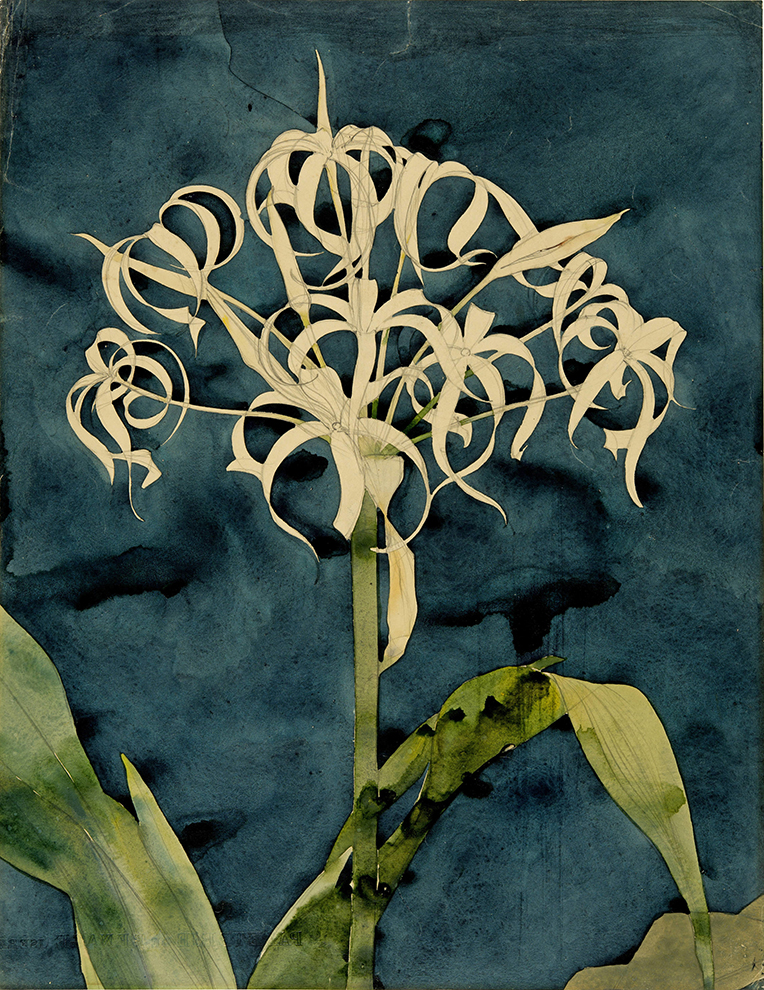Augusto Giacometti was born in Val Bregaglia, in Stampa (Graubünden), in 1877. His second cousin is the painter Giovanni Giacometti, his senior by nine years and the father of Alberto, Bruno and Diego. At the age of twenty, Augusto left his native village in order to take art classes at the Kunstgewerbeschule of Zurich before going up to Paris, where he studied under Eugène Grasset at the École nationale des arts décoratifs. Stamped by Grasset’s theories, notably his “ La Plante et ses applications ornementales ” (Plants and Their Ornamental Applications), Giacometti’s painting quickly assimilated the vocabulary of Jugendstil and the precepts of William Morris.
Nature and the riches of the plant world became the starting point for the artist’s formal experiments. Then, as he gradually freed himself from that ornamental art, Giacometti developed a painting style made up of different dabs of colour that left the canvas untouched in places to create breathing spaces which alternate with thick, fragmented applications of pigment.
Between 1902 and 1915, he lived and worked in Florence and immersed himself in the works of the early Renaissance, notably the art of Fra Angelico. Back in Zurich, Giacometti began his long career creating frescos and stained glass devoted to profane subjects. During the year 1917, he was friendly with the Dadaists Tristan Tzara, Sophie Taeuber-Arp and Hugo Ball.
He regularly exhibited abroad, at the 1932 Venice Biennial for instance, and earned an international standing. The Second World War slowed the frequency of his shows and the final years of his life were devoted to writing his autobiography. He died in 1947 in Zurich.
Augusto created stained glass and mosaics for the University of Zurich, and produced major decorative schemes for a range of institutions. Major retrospectives were devoted to him at the Kunstmuseum of Chur and Lucern respectively in 1987 and 2003.
Nature and the riches of the plant world became the starting point for the artist’s formal experiments. Then, as he gradually freed himself from that ornamental art, Giacometti developed a painting style made up of different dabs of colour that left the canvas untouched in places to create breathing spaces which alternate with thick, fragmented applications of pigment.
Between 1902 and 1915, he lived and worked in Florence and immersed himself in the works of the early Renaissance, notably the art of Fra Angelico. Back in Zurich, Giacometti began his long career creating frescos and stained glass devoted to profane subjects. During the year 1917, he was friendly with the Dadaists Tristan Tzara, Sophie Taeuber-Arp and Hugo Ball.
He regularly exhibited abroad, at the 1932 Venice Biennial for instance, and earned an international standing. The Second World War slowed the frequency of his shows and the final years of his life were devoted to writing his autobiography. He died in 1947 in Zurich.
Augusto created stained glass and mosaics for the University of Zurich, and produced major decorative schemes for a range of institutions. Major retrospectives were devoted to him at the Kunstmuseum of Chur and Lucern respectively in 1987 and 2003.




